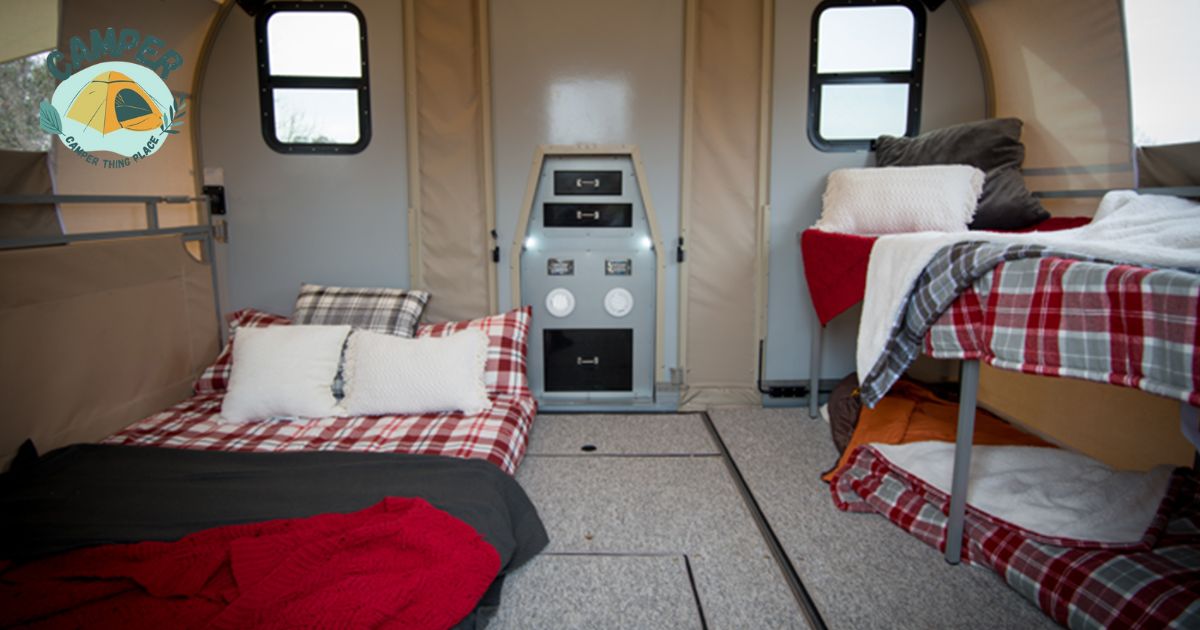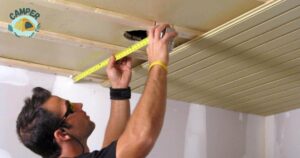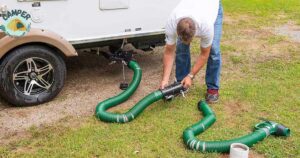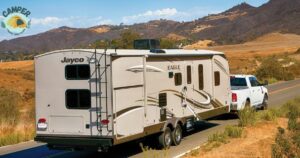Camper square footage refers to the interior space of a camper, measured in square feet. It includes living, kitchen, and bathroom areas, crucial for assessing available space. Larger square footage provides more room for comfort and facilities.
Understanding the square footage of a camper is essential for efficient space utilization and comfortable living. It helps answer the question, How many square feet does a camper have? By knowing the camper’s square footage, individuals can assess the available room for amenities, storage, and movement within the confined space.
Camper square footage is influenced by factors like overall size, interior layout, and facility inclusion. Effective design and smart space utilization impact the usable square footage. The type of camper, be it a motorhome or travel trailer, also determines the available space for comfort and mobility.
Understanding Camper Size
Camper size involves considering factors such as overall dimensions, square footage, and layout configuration. The size directly affects living space, storage capacity, and maneuverability.
By assessing individual preferences, travel needs, and intended use, one can make informed decisions on the most suitable camper size for a comfortable and enjoyable experience.
Relation between camper length and square footage
The relationship between camper length and square footage is generally direct. A longer camper often translates to more interior space, especially when you adjust the slide out on a camper. However, the specific layout and design influence how efficiently that length is utilized in terms of square footage.
Creative interior configurations and space-saving features can optimize the living area, but in most cases, a longer camper will offer more square footage for amenities and comfort.
Popular camper lengths and their square footage
Camper lengths vary widely, but some popular categories and their approximate square footage include:
Small Trailers (10-20 feet): Typically offer around 100-200 square feet.
Mid-Size Trailers (20-30 feet): Provide approximately 200-400 square feet of living space.
Large Trailers and Motorhomes (30+ feet): Can have 400 square feet or more, with luxury models exceeding 1,000 square feet.
These are general estimates, and actual square footage can vary based on the specific design, layout, and features of each camper model.
Importance of size for travel convenience
The size of a camper significantly affects travel convenience by affecting maneuverability and adaptability. Compact campers are more agile, making it easier to navigate through various terrains and tight spaces.
Smaller sizes contribute to better fuel efficiency, reducing travel costs. Additionally, size considerations are crucial for finding suitable parking spots and complying with campground restrictions, enhancing overall convenience during the journey.
Different Types of Campers
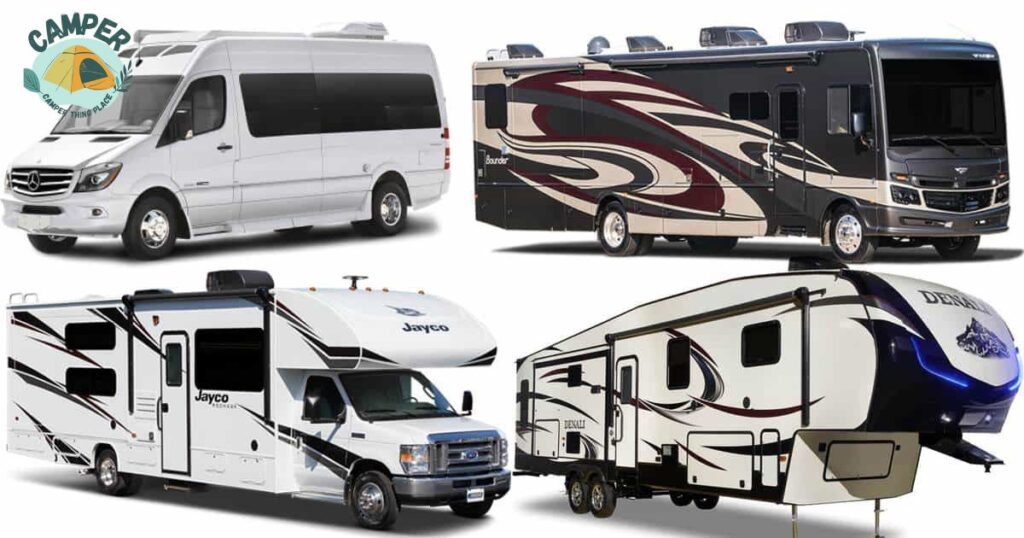
Campers come in various forms, from traditional tent campers to modern RV enthusiasts. Some prefer the simplicity of backpacking tents, embracing nature with minimal equipment.
On the other hand, RV campers enjoy the comforts of home on wheels, with kitchens and bathrooms at their disposal. Whether roughing it or glamping, there’s a camper type for every outdoor adventurer.
Small campers
Small campers are a popular choice for those seeking a compact and nimble outdoor adventure. Teardrop trailers, with their streamlined design, offer a cozy sleeping space and basic amenities.
Popup campers are another small option that expands for more room when stationary. These compact campers are easy to tow, and park.
They also provide a comfortable shelter for individuals or couples exploring the great outdoors without sacrificing convenience.
Larger campers
Larger campers cater to those who prioritize spaciousness and additional amenities for family or group adventures. Motorhomes, often equipped with kitchens, bathrooms, and living areas, provide a home-like experience on the road.
Fifth-wheel trailers and larger travel trailers offer ample living space and storage for extended journeys. These larger campers are well-suited for families or groups of friends looking to share the joys of camping.
Increased square footage
These large campers, such as Class A motorhomes or larger travel trailers, offer expanded interiors with separate living, dining, and sleeping areas. The added square footage allows for more facilities like full kitchens, bathrooms, and even entertainment systems.
Families or groups seeking a comfortable and roomy camping experience often find that larger campers provide the extra space needed for a relaxed and enjoyable adventure on the road.
Calculating Square Footage
To calculate the square footage of a camper, you need to measure the length and width of the interior space. Follow these steps:
Measure Length and Width:
- Measure the length of the camper’s interior from one end to the other.
- Measure the width of the camper’s interior from side to side.
Multiply Length by Width:
- Multiply the length measurement by the width measurement. The formula is: Square Footage= Length × Width Square Footage = Length × Width
Convert Units if Necessary:
- Ensure that the measurements are in the same units (e.g., feet). If not, convert them to the same unit before multiplying.
For example, if the length of the camper is 20 feet and the width is 8 feet, the square footage would be 20 ft × 8 ft = 160 sq ft 20ft × 8ft = 160 sq ft.
Keep in mind that this calculation provides the total floor area inside the camper. It doesn’t account for any additional spaces like slide-outs, overhangs, or non-rectangular shapes in the camper’s design. If you need a more precise measurement, consider breaking down the camper’s interior into smaller sections and calculating each separately.
Considerations for Traveling with People
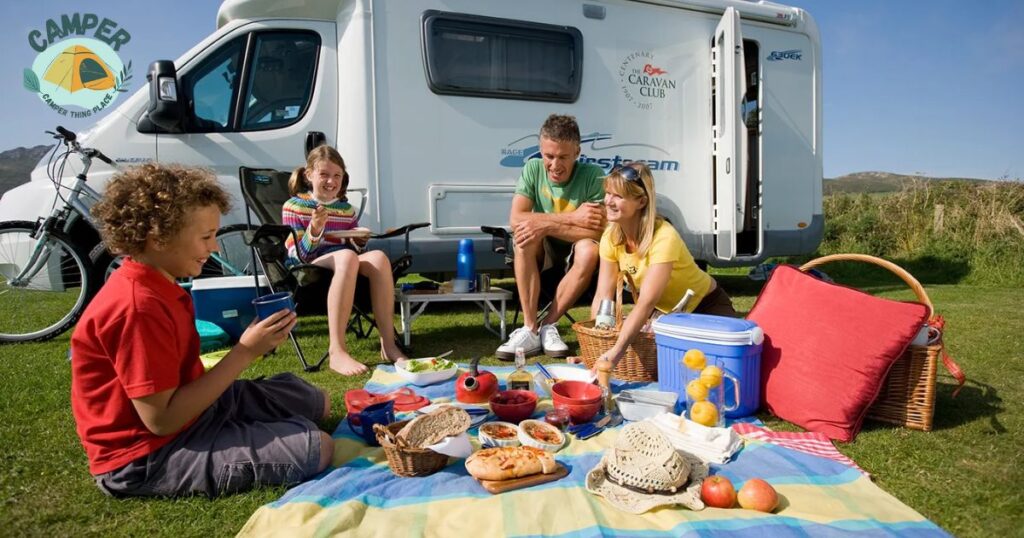
When determining how many square feet a camper has, various considerations come into play, especially when traveling with others. The layout and design of the camper significantly impact the available space.
Compact campers are often cleverly organized to maximize every square foot. Sleeping arrangements, seating configurations, and storage solutions all contribute to the overall comfort and functionality of the space.
Additionally, factors like the number of occupants, their preferences, and the duration of the trip influence how well the camper accommodates everyone. It’s essential to prioritize comfort and efficiency when selecting a camper for group travel, ensuring an enjoyable and seamless experience on the road.
Impact of camper size on the number of travelers
The size of a camper significantly affects the number of travelers. Larger campers, with more square footage, are ideal for larger groups or families, providing ample sleeping, seating, and storage space.
On the other side, smaller campers are better suited for solo travelers or couples, offering increased flexibility and fuel efficiency. Choosing the right size depends on individual preferences and the need for balance between space and functionality.
Whether opting for a spacious motorhome or a compact camper van, the goal is to ensure a comfortable and tailored travel experience for everyone on board.
Recommendations for family-friendly campers
When selecting a family-friendly camper, prioritize versatile layouts with separate sleeping areas for privacy. Look for ample storage, functional kitchens, and bathroom facilities to enhance convenience.
Safety features are crucial, and ensure the camper accommodates the family’s size and needs. Options like travel trailers with bunk beds or Class C motorhomes with spacious interiors are popular for family adventures.
Consider camper vans with multifunctional spaces for a compact yet comfortable choice. By focusing on these features, you can find a camper that creates a comfortable and enjoyable experience for the whole family.
Does A Motorhome RV Have More Square Footage Than A Camper?
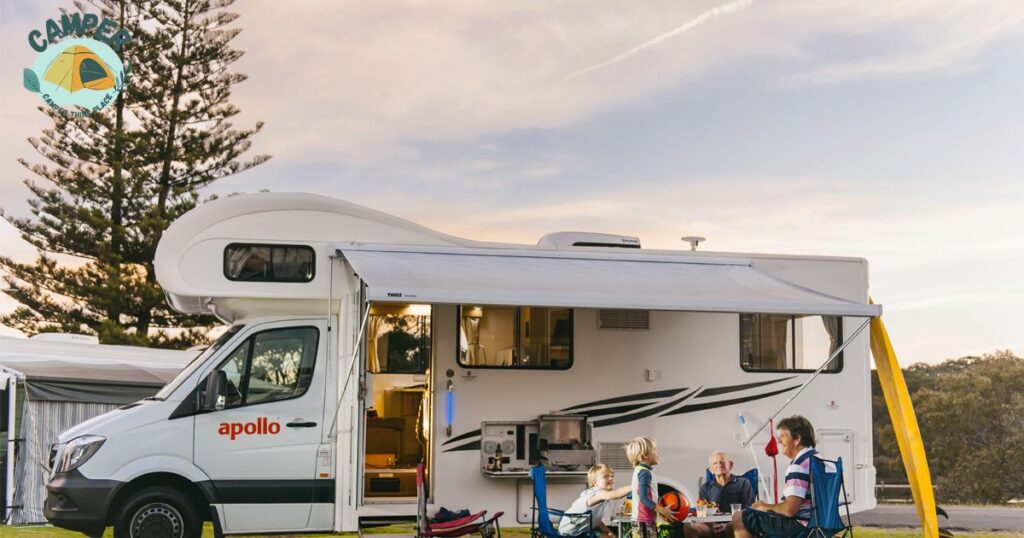
Motorhome RVs generally have more square footage than traditional campers, offering spacious interiors and often featuring slide-out sections for additional room. The design of motorhomes prioritizes comfort on the road.
Making them a popular choice for those seeking ample living space. While campers come in various sizes, motorhomes are known for providing a more expansive and comfortable traveling experience.
Class A RV
Class A RVs, recognized for their luxurious design, provide a substantial amount of square footage within a single, integrated structure. These motorhomes, resembling buses, offer spacious interiors with full kitchens, bathrooms, and comfortable living spaces.
They range from 25 to 45 feet in length, Class A RVs provide to various preferences, providing a luxurious and sizable travel experience for those seeking the pinnacle of recreational vehicle living.
Class B RV
Class B RVs, also known as camper vans, are compact and versatile motorhomes designed for easy maneuverability. Despite their smaller size compared to Class A RVs, Class B models efficiently utilize space, offering a cozy and functional living area.
These motorhomes typically range from 18 to 24 feet in length, making them suitable for both urban exploration and off-the-grid adventures. Class B RVs are a popular choice for those seeking a more nimble and fuel-efficient option without sacrificing essential facilities.
Class C RV
Class C RVs strike a balance between the spaciousness of Class A and the maneuverability of Class B. With a distinctive cab-over design, they offer a comfortable living space on a truck or van chassis.
Class C RVs typically range from 20 to 33 feet in length, providing a well-designed interior with sleeping quarters, a kitchen, and bathroom facilities. Popular for their versatility and ease of handling, Class C motorhomes are preferred by a wide range of RV fans, offering a practical and comfortable solution for various travel needs.
Maintenance and Square Footage
The maintenance of a camper is closely linked to its square footage. Larger campers often come with more complex systems and features, requiring diligent maintenance to ensure everything functions smoothly.
Regular checks on the plumbing, electrical systems and overall structural integrity are crucial for larger models. On the other hand, smaller campers might have simpler setups, but regular maintenance remains essential to prevent any issues.
Regardless of size, routine inspections, cleaning, and timely repairs contribute to the longevity of the camper. Paying attention to the square footage doesn’t just impact maintenance efforts but also influences the overall camping experience.
Smaller campers may require less effort but could mean limited living and storage space, while larger ones offer more room but demand more comprehensive upkeep. Balancing maintenance needs with square footage is key to enjoying a well-kept and efficient camper.
Maintenance challenges with larger campers
Maintaining larger campers poses challenges due to their extensive features and complex systems. The increased square footage means more components that require regular inspection and upkeep.
Critical areas, such as plumbing, electrical systems, and roofs, demand meticulous attention. Storing large campers can be challenging, requiring ample space. Owners should be prepared for the added responsibilities to ensure a safe and enjoyable camping experience.
Tips for maintaining a camper’s square footage
Follow these tips for maintaining the camper’s square footage:
- Conduct routine checks on all aspects of your camper’s square footage, including walls, floors, and ceilings, to identify and address any potential issues promptly.
- Regularly clean and declutter the interior to maintain a comfortable living space. This not only enhances the aesthetics but also prevents the accumulation of dirt and debris.
- Ensure all systems, such as plumbing, electrical, and heating, are in good working condition. Address any malfunctions promptly to prevent further damage and maintain a functional living space.
- Properly seal and insulate your camper to regulate temperature and protect against the elements. This helps in preserving the square footage and ensures a more comfortable interior.
- Opt for compact and collapsible storage solutions to maximize the use of available space. This helps in keeping the camper organized and prevents unnecessary clutter.
By applying these tips to your camper maintenance routine, you can preserve and optimize the square footage, creating a more enjoyable and functional living space on the road.
Trends in Camper Design
In recent years, there has been a notable shift in trends within camper design, focusing on maximizing functionality within limited square footage. Manufacturers are increasingly prioritizing space-saving solutions.
They are also making innovative layouts to make the most of every square foot in a camper. Compact yet efficient designs often incorporate multifunctional furniture and storage solutions. Allowing campers to enjoy a comfortable living space without sacrificing essential facilities.
As the demand for smaller, more maneuverable campers grows, the industry continues to explore creative ways to optimize square footage and enhance the overall camping experience.
Frequently Asked Questions
What is the size of a standard camper?
The size of a standard camper varies, but they typically range from 15 to 30 feet in length.
How many feet wide is a camper?
The width of a standard camper is usually around 7 to 8 feet.
What is the length of a small camper?
A small camper is typically around 15 to 20 feet in length.
What’s the square footage of a teardrop trailer?
Teardrop trailers typically have a compact size, with around 50 to 80 square feet of space.
How many square feet is a fifth-wheel camper?
Fifth-wheel campers can provide spacious interiors, ranging from 200 to 400 square feet, depending on the model.
Final Thoughts
The square footage of a camper varies widely based on its make, model, and design. When thinking about the question, How Many Square Feet Does A Camper Have? it’s important to note that campers can range from compact trailers with around 100 square feet to spacious motorhomes exceeding 300 square feet.
Prospective buyers or renters need to consider their specific needs and preferences when choosing a camper, ensuring they select one with the right amount of space for a comfortable and enjoyable travel experience.
Understanding the square footage of a camper is crucial for planning and maximizing living space during trips. Whether opting for a cozy teardrop trailer or a roomy Class A motorhome, individuals should assess their requirements and lifestyle to find the camper size that best suits their needs, making each journey a memorable and well-spaced adventure.

Jackson Ray, a seasoned blogger with a decade of experience, is the creative mind behind “camperthingsplace.com.” Explore his wealth of insights and passion for camping through engaging content on the website.
